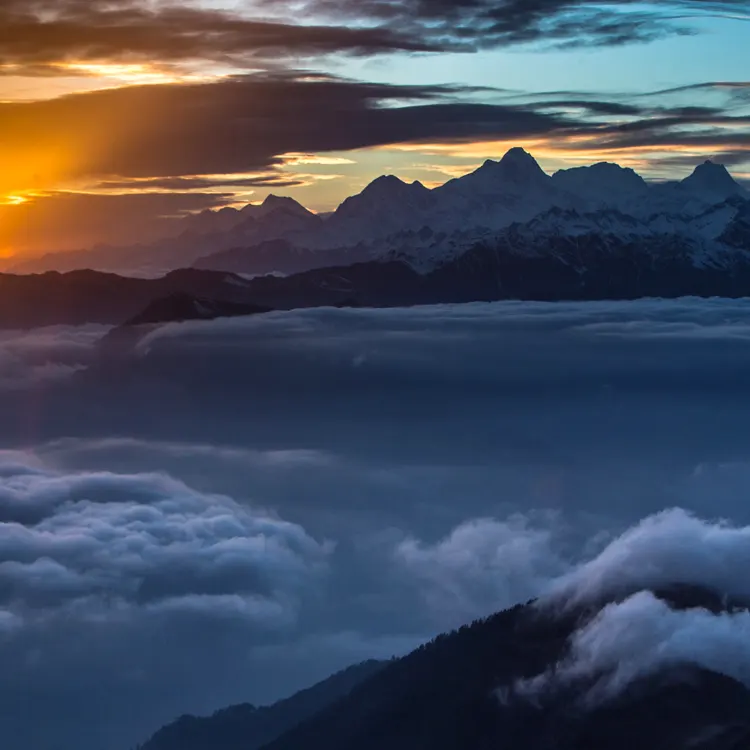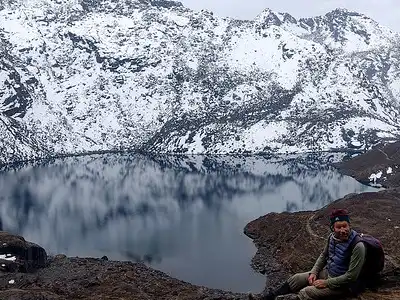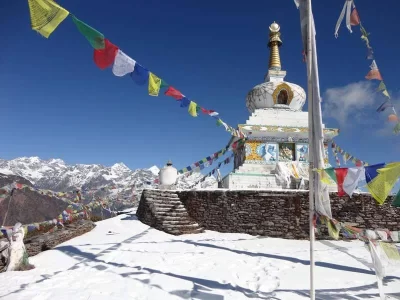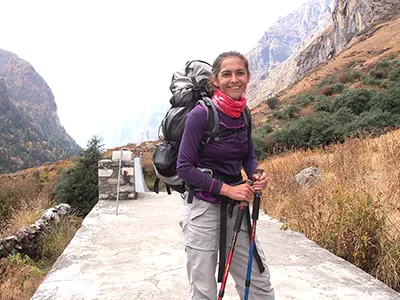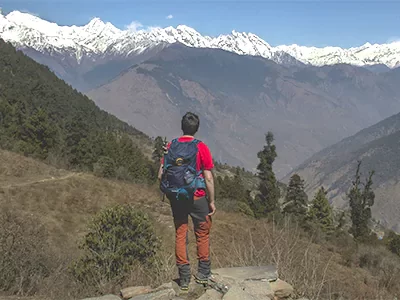In the tranquil Himalayas of Nepal’s central north, the Langtang Region offers the chance to immerse oneself in the divine natural beauty fully. It is straightforward to visit the Langtang Region from the bustling and friendly city of “Kathmandu.” The trail will take you within the Langtang Valley if you choose the northern route from Shivapuri. The lush greenery and the snowy White Mountains like Langtang Lirung, Annapurna, Makalu, and Dhaulagiri blend with the valley’s unique Tibetan cultural background. The Langtang region is a natural crossover point for the eastern and western Himalayan ranges. The entire Langtang Region is epic, from the holy Gosaikunda Lake to the exhilarating Langtang National Park.
Langtang Region Trek Packages
Langtang Gosaikunda Helambu Trek
Ama Yangri Trek
Langtang Valley Trek
Langtang Gosaikunda Trek
Langtang Region Trek Difficulty
Trekkers can undertake many expeditions in the Langtang region, which offers wholesome adrenaline. However, considering the higher altitude of the Langtang region, there will be complications. There are two possible starting points for the trek to the Langtang valley: from the Shivapuri north side or Syabrubesi. Trekking in the Langtang Valley is simple to moderately strenuous. Likewise, it will be possible to ascend the numerous slopes in the Langtang Region without any prior trekking experience.
Furthermore, the trek begins at Syabrubesi at around 1500 meters and ascends to a height of 4500 meters above sea level adjacent to Kyanjin Gompa. Aside from that, the linear terrains stretch up to the base of Langtang Lirung (7,200m) and Ganja La Pass (5,100m), which will be tricky to ascend and severe. Consequently, it will be essential to acclimatize while on the trek. Furthermore, the sceneries of the Langtang region are distinct from those of other regions, and these landscapes include several lurking trials and hamlets. Besides that, the trek frequently reaches over 3000 meters high, increasing the possibility of altitude sickness. So, it’s crucial to be physically and mentally ready to deal with difficulties before stepping into Langtang Region.
Langtang Region Vibrant Culture
The highlands of the Langtang Region are home to numerous tribal communities and cultural backgrounds. Moreover, The region is home to Tamang, Gurung, Rai, Limbu, Sherpa, and Lama Inhabitants. Some of these people’s customs and religions likewise derive from Tibetan culture. With all of these ethnic groups’ hamlets under the shadow of the mountains, this region also gives off a unique vibration that feels like it corresponds to a bygone era. Trekkers are also susceptible to experiencing these people’s festive season. Outstanding arts and crafts are readily accessible around the monasteries in this area and frequently represent the history and culture of different ethnic communities. The inhabitants of this region are orderly and like to go about their daily lives despite the variation and greet everyone with courteous welcoming. Along with it, the Langtang Region’s entire ecosystem and landforms are utterly gorgeous.
Divine Ecosystem
A Bhote Koshi river emerges directly from Tibet on the north side of the lovely Langtang Valley and separates the two large mountains. It is similar to how innumerable waterfalls in this region, which significantly contribute to its attractiveness. Meanwhile, you can explore “Langtang Glacier,” one of Nepal’s longest glaciers from north to south. Furthermore, on top of the mountain is the mystical Gosaikunda Lake, which reflects the tremendous devotion and religious dignity of the individuals who reside in this region.
In addition, “Langtang National Park” is another divine feature that will astound tourists to this region. The region’s northernmost part features a diverse vegetation and wildlife ecosystem. The Himalayan deer, Himalayan fox, Red Panda, and Rhododendron are familiar sights. Additionally, it is a once-in-a-lifetime experience to witness the waterfall cascading down the meadows where yaks and sheep are grazing beneath the icy Himalayas. Other than this, there are several other monasteries to explore. Another tourist attraction from which to appreciate the glimpse of several Majestic mountains is Kyanjin Gompa, which lies at an elevation of around 3000m.
Unique Tamang Heritage Trek
The expedition “Tamang Heritage” will be the only one to link the lower Langtang valley to the Ganesh Himal’s base. The trekking route will take you past the tranquil Tamang villages, over pine forests, and several streams. This expedition will expose you to the northern Langtang’s ancient artifacts while also introducing you to the fascinating culture and traditions of the Tamang locals. Furthermore, throughout this entire trek, the Langtang Spectra remain by your edge. In addition, this route traverses through other hidden settlements and communities as it ascends to Rasuwagadhi from Syabrubesi and Tatopani.
Also, the trial will take you up to the “Briddim” cultural settlement. These towns along the trail reflect the Tamang and Gurung people’s underlying traditions. Likewise, this expedition exemplifies the Tamang communities’ Alpine Lifestyle fusion with the Himalayas’ scenic beauty. The nostalgic tones of these Himalayan communities and the northern Himalayas vista make the trek fascinating. Along the trek, teahouses, monasteries, and traditional houses significantly contribute to the diverse experiences.
Fluctuating Weather and Ideal Season
Weather changes all year round in the Langtang region, which sits on the north side of Kathmandu. The entire Langtang Region experiences the torrential downpours of the chilly easterly breeze. The trail becomes a bit slicker and steeper due to the clouds’ shadows regularly moving over the hills and brushing the ground. Similarly, the snowfall will also be significantly heavier at this region’s northern edge. The spring and autumn seasons are ideal for visiting the Langtang region. The Langtang Region will be at its finest during these two seasons.
The months, in particular from September to November and March to May, will be the ideal times to traverse the Langtang valley with a smile on your face. The humidity will generally be lower, and the visibility over the entire region will be excellent throughout these two seasons. It will also be feasible to admire the scenery of Dhaulagiri, Ganesh Himal, Nilgiri, and Manaslu. In addition, due to the high altitude and rising temperature during the day, there could be many rain probabilities. However, Expedition to Langtang region will be stunningly gorgeous at this time of year due to temperate temperatures of roughly 20 degrees Celsius during the day and -5 degrees Celsius at night.

